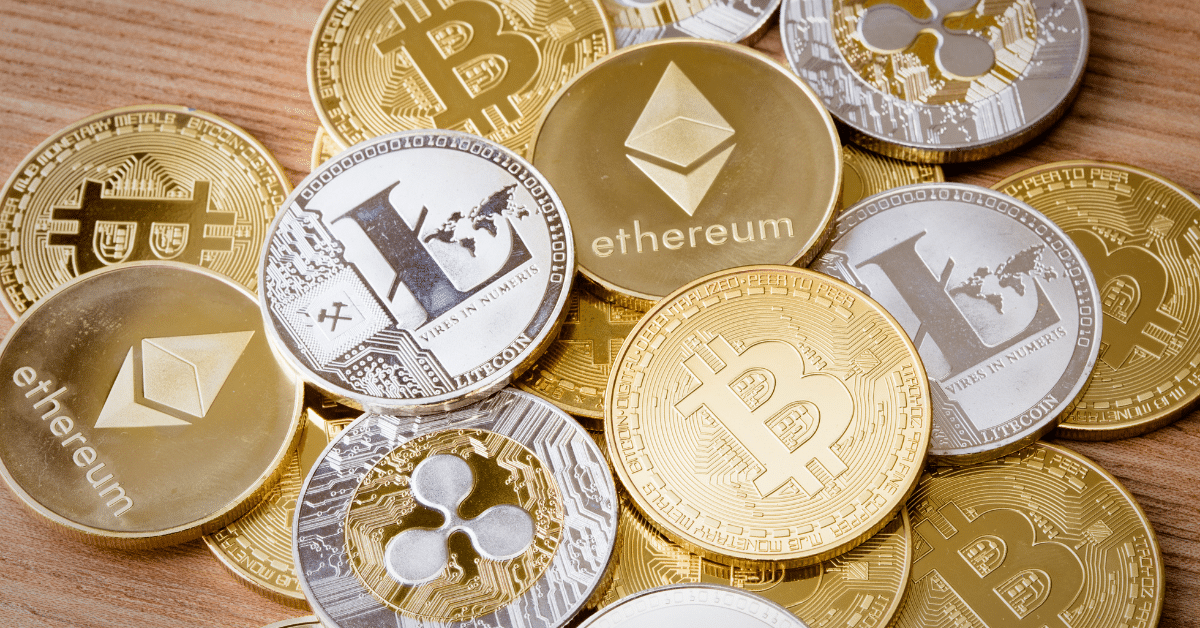
#image copyrights swyftx
What are liquidity pools?
Liquidity pools are a crypto industry concept. They give a lifeline to Defi protocol’s basic operations and function as hotbeds for investors with a passion for high risk and big profit. Liquidity pools are merely smart contracts that contain locked crypto tokens. The users of the platform provide these tokens. Liquidity pools provide asset liquidity and make it smoother for traders to swap currencies. They operate without the assistance of a third party.
Automated Market Makers

The automated market makers (AMM) support them and keep the liquidity pools running and stable. Before they came into play, crypto market liquidity was an issue regarding Decentralized Crypto Exchanges and Ethereum. DEXs were new to the game, and it was yet to be widespread. It didn’t have a big enough audience; therefore, AMM was the solution. They provided more assets which brought with it high liquidity. The more assets included in a pool, the more liquidity is experienced. This makes trading and exchanging easier for all users.
Low Liquidity
When liquidity is low, it can lead to high slippage. Slippage is the expected price of a coin to what it sells for. Because few tokens are locked up in pools, token changes in a pool due to a swap or any other transaction produce a higher imbalance. On the other hand, traders won’t experience this when liquidity pools are high.

The slippage we spoke about beforehand is not the worst scenario. If the market has trouble providing enough liquidity for a particular trading pair, users will have tokens they can’t sell.
What are the benefits and advantages of participating in liquidity pools?
Liquidity pools allow investors to earn passive income by introducing liquidity to the market. The pool is sustained by contributors, called liquidity providers, who offer their digital assets and are compensated with a share of the transaction fees generated by the pool. This enables investors to earn a consistent income stream without continuously trading or taking unnecessary risks.
Liquidity pools improve market efficiency by providing sufficient liquidity for trading purposes. When individuals add liquidity to the pool, it enhances the order books. It decreases the spreads, reducing unexpected market shifts and improving the trading experience for all involved. Increased market efficiency benefits traders and investors alike.
Investors gain exposure to various trading opportunities by participating in liquidity pools. Decentralized exchanges (DEXs) often utilize liquidity pools as a means for users to engage in token trading. Investors have the opportunity to tap into a varied array of trading pairs and take advantage of the volatility and trading activity of various tokens through liquidity provision.
Liquidity pools offer flexibility and control to participants. Investors can choose the assets they want to lend liquidity to and pick the pools they want to partake in. This allows them to match their investment plans with their capacity for risk and portfolio preferences. Several liquidity pools offer added benefits to individuals participating.
The benefits range from governance tokens, airdrops, or yield farming opportunities, and allowing investors to earn additional benefits beyond the basic transaction fees. These incentives can upgrade the overall profitability and returns for liquidity providers. Liquidity pools frequently aid new and up-and-coming ventures, allowing investors to acquire potentially lucrative tokens at an early stage. Engaging in such pools enables investors to support new projects and potentially reap the rewards of the future prosperity of those tokens.
Liquidity pools allow investors to diversify their holdings across different assets and pools. By spreading their investments across multiple pools, investors can reduce the risk associated with holding a single asset and enhance their overall portfolio diversification.
What are some successful examples of liquidity pool projects?
Uniswap: Uniswap stands out as a highly favoured decentralised exchange and liquidity pool protocol. This technology allows users to offer liquidity and carry out token transactions directly from their wallets. Uniswap has played a significant role in the development of DeFi by employing an AMM framework.
SushiSwap: SushiSwap is a decentralised platform for providing liquidity and exchanging cryptocurrencies, which was created by copying the code of Uniswap. SUSHI, its native token, is among the extra features and incentives liquidity providers can enjoy. SushiSwap has gained popularity for its creative yield farming approach and emerged as a significant participant in the DeFi world.
PancakeSwap: PancakeSwap is founded upon the Binance Smart Chain (BSC), serving as an exchange without centralisation. With its comparable Automated Market Maker (AMM) model to Uniswap, this platform has become widely known for charging lower transaction fees than Ethereum-based networks. PancakeSwap has gained many Binance Smart Chain (BSC) networks and users.
Curve Finance: Curve Finance represents a decentralised exchange specifically tailored towards facilitating stablecoin trading while minimising slippage. This study centres on providing liquidity to stablecoin pairs, thereby reducing their trading with negligible market price influence for the users. Curve Finance has gained attention for its effective swapping mechanism for stablecoins and has emerged as a leading liquidity pool initiative in decentralised finance.
Balancer: The Balancer protocol is a platform that enables the creation and management of personalised liquidity pools by users, thereby providing increased liquidity. The platform offers features, including weighted and smart pools, that empower users to establish individual asset allocations and trading fees. The Balancer platform has gained significant recognition for its unique abilities to manage pools and provide flexible liquidity alternatives.
Aave: Aave is a prominent platform that operates on a decentralised model for lending and borrowing, which additionally integrates liquidity pools. One can deposit their assets into the liquidity pools provided by Aave to earn interest and offer liquidity for the lending activities undertaken by the platform. The Aave platform has garnered recognition as a notable participant in the decentralised finance lending sector.
How can investors determine the profitability and returns of participating in a liquidity pool?
Investors can quickly assess the profitability and potential returns of participating in a liquidity pool through several key factors. The first notion is the Annual Percentage Yield (APY), which represents the annualised return on investment that liquidity providers can get from the pool. APY is influenced by transaction fees, trading volume, and the percentage share of the pool they contribute. Higher APY implies greater possible returns, but it is essential to analyse historical APY data and consider its stability over time.
Another factor to consider is the price fluctuation and trading activity of the assets in the pool. Increased trading activity and asset demand usually lead to more significant transaction fees and the possibility of higher returns. On the other hand, assets that show limited trading may result in reduced profits. Conducting a thorough analysis of the liquidity pool’s trading volume in the past and considering the future growth or interest in the assets included is crucial.
Additionally, investors should be sure to evaluate the pool’s fee structure. Some liquidity pools charge a fixed fee percentage on each transaction, while others may offer dynamic fee mechanisms. Learning the fee structure helps investors estimate potential returns more efficiently.
Evaluating the potential risks associated with participating in the liquidity pool is always helpful. Factors such as impermanent loss, smart contract vulnerabilities, and possible slippage must be top priorities. Performing thorough research, including auditing the protocol’s smart contracts and assessing the security measures, can help avoid these risks.
Lastly, investors should carefully evaluate the general state of the market, including its conditions and patterns. The profitability of a liquidity pool can be affected by many factors, including the popularity and development of DeFi, the hosting platform’s efficacy, and the assets’ performance. Having current information regarding the latest news and monitoring the market movements can yield insights into potential profits. Investors can make well-informed decisions about participating in a liquidity pool by carefully assessing these factors and considering the potential profitability and returns of their risk appetite and investment goals.
Conclusion
In conclusion, liquidity pools have appeared as a fundamental building block of the decentralized finance (DeFi) ecosystem, offering numerous benefits and opportunities for investors and liquidity providers. These collective pools allow people to provide their resources and engage in the supply of liquid funds, earning a passive profit from transaction charges and added incentives. Liquidity pools optimize market effectiveness, facilitate entry to profitable trade options, and furnish adaptability and power over investments.
However, it’s crucial to understand the risks, such as impermanent loss and smart contract vulnerabilities, and to proceed carefully when selecting and managing liquidity pools. As the DeFi space continues to develop, liquidity pools are likely to play an essential role in shaping the future of decentralized exchanges and financial protocols.
For more news updates, visit our homepage now and see our latest news article. Want to learn more about trading? Visit our education page now and learn for FREE!
What is Liquidity?(Opens in a new browser tab)

